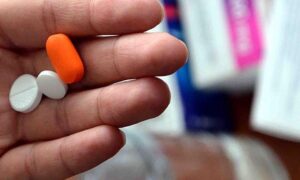[ad_1]
Proper maintenance of makeup tools and care for proper cleaning and disinfection should be an important part of the beauty routine of every person who uses these tools.
Removing make-up at the end of the day is essential to keep the skin clear and healthy. In addition to your regular skin care routine, keeping your makeup kit clean is crucial to avoiding skin problems. Dead skin cells, environmental dirt, oil and bacteria can build up on foundation sponges, makeup brushes and even lipsticks. Using these dirty, unhealthy products on sensitive facial skin can lead to skin irritation, redness, rashes, clogged pores, blackheads, whiteheads, and even flare-ups of underlying acne. Using contaminated cosmetics and make-up tools can also increase the risk of diseases such as conjunctivitis, staph, esterichia coli, yeast infections and cold sores. Beauty experts emphasize that cosmetics and tools used for makeup should be disinfected once a fortnight. Brushes, the mixing sponge, should be washed once a week, while metal or plastic tools should also be disinfected once a week.
Makeup brushes
Keep your makeup brushes clean and free of foundation and eyeshadow residue. You can use a brush cleaner or plain kitchen paper for a quick cleanup. To remove excess makeup from the bristles, wash makeup brushes with cool or lukewarm water and brush with plain soap. Rotate the brush in the palm of your hand while washing to ensure no dirt remains between the bristles. Rinse until the water runs clear, free of color and visible dirt. When the wash is finished, place the brushes vertically on a bench and let them air dry. It is best to avoid laying them down as moisture will be trapped between the bristles.
Makeup sponges
Make-up tools such as sponges or facial cleansing brushes should be left to dry after each use, otherwise they may develop mould.
Follow these steps to clean your makeup sponge:
- Gently squeeze the sponge under running water.
- Add a cleaning liquid or rub a bar of soap onto the sponge.
- Give the sponge a good massage by pressing and pushing it into the palm of your wet hand.
- Then squeeze and rinse until the water runs clear.
- Now set your sponge aside and allow it to naturally air dry. Ideally you can rest it on absorbent kitchen paper.
If you want to skip this cleaning task, use disposable applicators or sponges, which can be thrown away after a few uses.
Liquid foundation
For cosmetics that cannot be cleaned, such as cream make up, the best way to maintain their hygiene is not to dip your fingers into them. Use application devices such as a clean cotton swab, special sponge or brush to access the product.
Lipstick and concealer
Twist the product stick slightly and then using a cotton pad remove a thin layer. Then spray the exposed area with isopropyl alcohol to disinfect it. Wipe it clean or let it air dry. It’s also a good idea to disinfect your lipstick and concealers at least once a week.
Stroke
Sharpen eyeliner and lipliner pencils before each use. If using retractable products, spray some alcohol on a cotton ball and wipe the tip of the pencil before use.
Makeup products in powder form
Dirt and oils can build up in your powder makeup products like eyeshadows, blushes, bronzers, and more. Using a butter knife, gently scrape off a thin layer of the product. Then spray some alcohol and let it air dry.
[ad_2]






